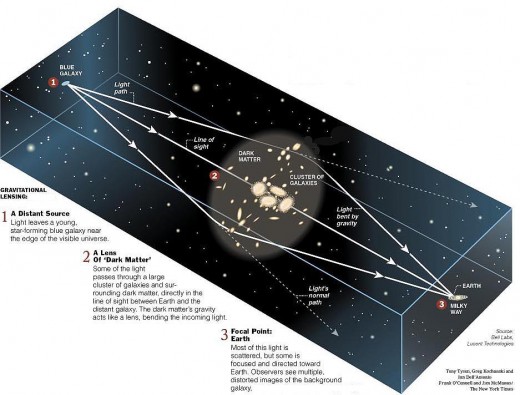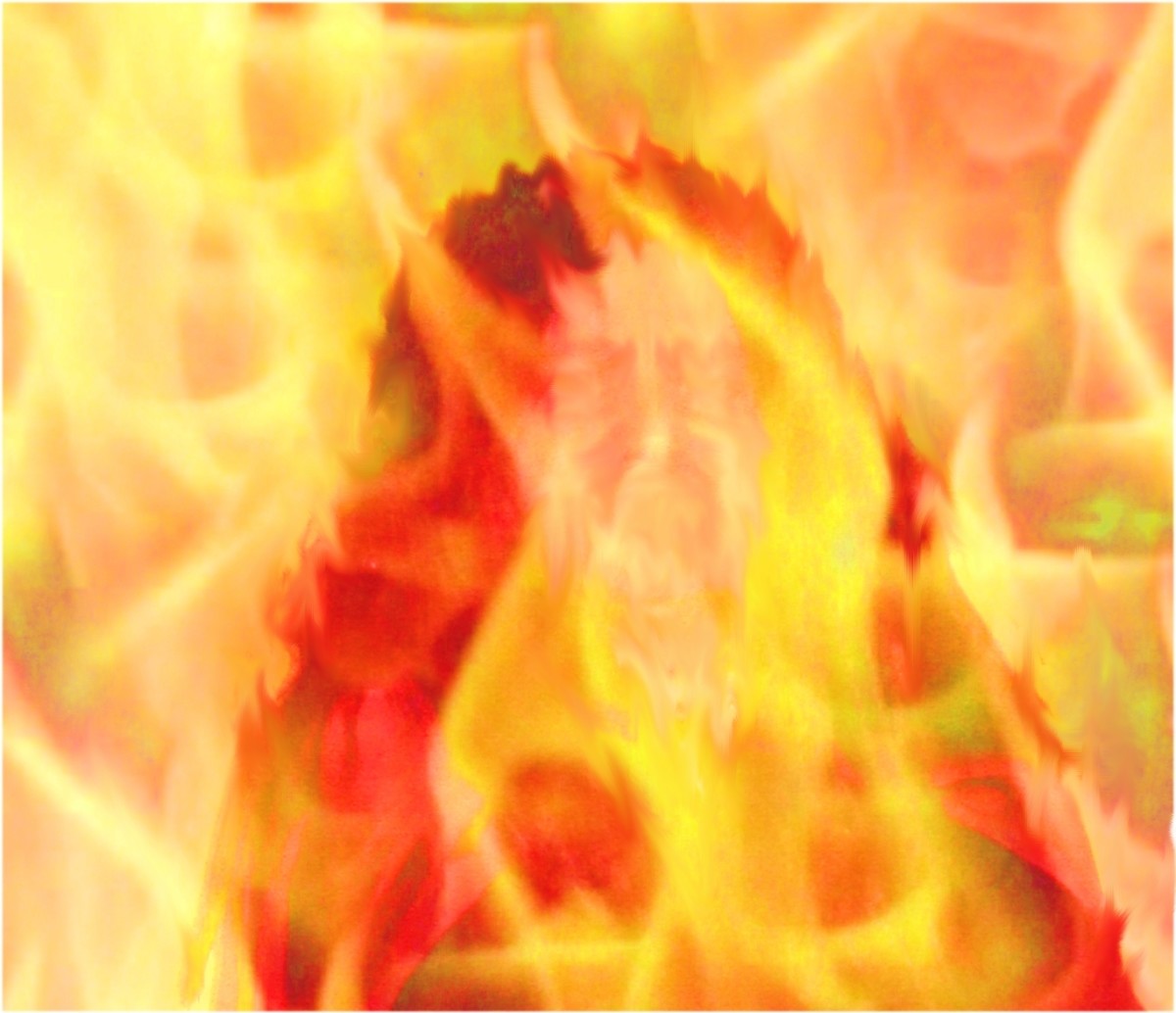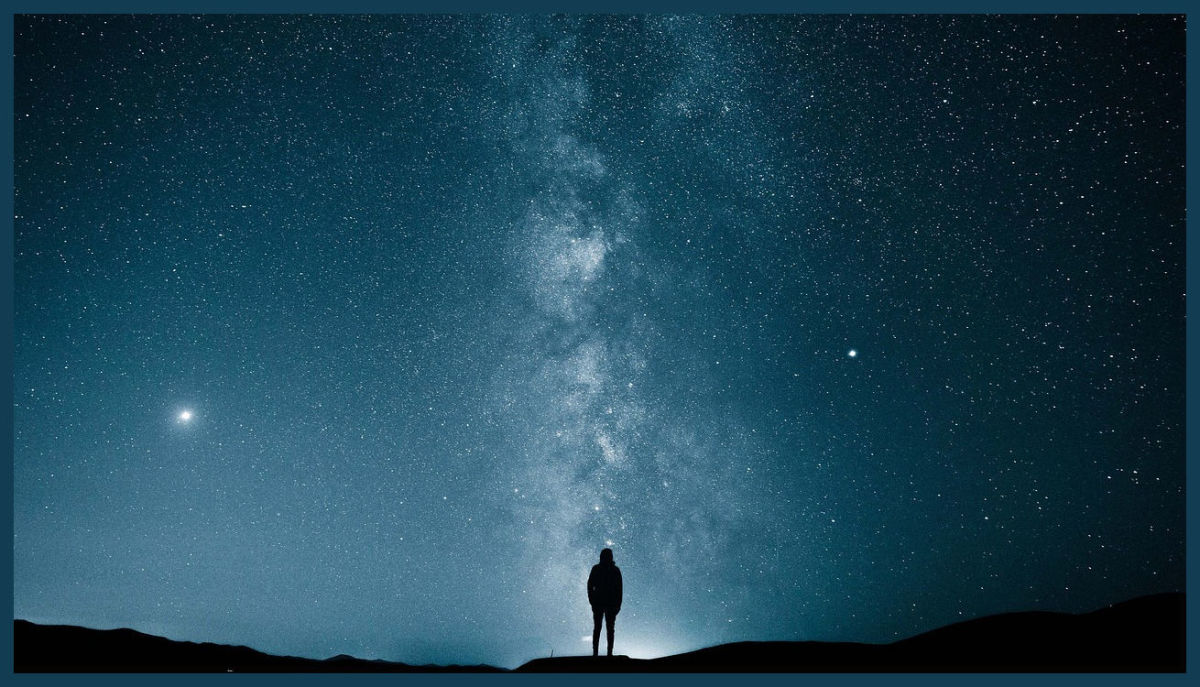Black holes at Pre-exploding Planet Earth's Interior
Dark matter
Earth is big, surely, and our home star (the sun) is much, much bigger.
Almost infinitely bigger even are all stars combined with all stuffs that may make up all future stars.
Quite a respectable mass, though as flotsam and froth compared to other stuffs that may constitute the bulk of the universe. These other stuffs may be regarded as "dark matter" because people were largely in the dark about it, and as a matter of fact, the stuffs have that name now.
Around 90% of total mass in the universe apparently is purely dark matter. It could have catastrophic influences on the remaining 10%, sooner or later. Exploding planets at most may only be so-so for it.
Dark matter as speculated may be viewed as black holes that cannot be seen. All black holes have that kind of dark invisibility that looks like black nothing.
Gravitational lensing of dark matter

A black hole

Black holes
There are known black holes that resulted from certain star processes, though not of the smaller sizes possible with conjectured dark matter black holes.
Exhausted or very massive stars that are at least 3 times the sun's mass may collapse and implode to a ball so dense that not even light may escape its gravity, becoming a black hole (reference# pc1 at end).
This type of black hole has an initial diameter of at least 11 miles, or 17.8 kms. By comparison Earth if squeezed into a black hole would be around two thirds of an inch or about 1.8 cms in diameter (reference #s pc2 & pc3).
(Stars slightly less than 3 times the sun's mass may explode into a supernova, while stars of the sun's mass become a white dwarf approximatetly Earth's size.)
Aside from massive star condensation, black holes may also be produced by other processes out of the said flotsam and froth stuffs.
Here on Earth scientists even have the opinion that microscopic black holes are constantly made in the upper peripheries of the atmosphere, although also evaporating to insignificance as soon as created. There seems to be no opinion on bigger destructive black holes being created and going lower to Earth's surface.
There are however well documented hot events experienced by some people that suggest it may be possible for bigger black holes to manifest in the lower thin layer of Earth where people live, likely manifesting too in the thicker biosphere where all living things live.
Outdoors phenomenon

Indoors phenomenon

Spontaneous Human Combustion
Some people had been observed to flash and burn suddenly into ashes in an interesting phenomenal known as "Spontaneous Human Combustion" or SHC. Subatomic particle processes, among numerous theories, were postulated as cause of the phenomena (reference# pa1 titled "Human Fireballs").
Evaporating black holes could also cause rapid burning. Small black holes may evaporate mass as high energy radiation and fast particles. The smaller the black hole the faster it evaporates and the hotter its temperature (reference #pd1, p.113).
The heat of SHC may concentrate on the bulkier mass of the human body, as extremities like the lower part of a leg could be left unburned while the rest burn to ashes completely.
For a human body to be burned to ashes with SHC the temperature was estimated to be at least 3,000 degrees fahrenheit. In the more familiar process of human combustion done at crematoriums, cadavers are burned around 2,200 degrees fahrenheit with lower temperatures on later procedures, taking up to 4 hours to complete. Bone fragments are still left after a lengthy roasting at crematoriums which are pulverized manually.
Whatever agent is responsible for SHC it seems to have some attraction for human beings, considering that the phenomenon may occur inside enclosures like rooms and affects principally a human occupant.
If the agent is a microscopic black hole or other particles with electric or magnetic potential, it may be attracted to things generated by human beings, like electricity, aura, magnetism or what.
It is also possible that the passage of such agents on Earth's surface is dense enough for many (if not all) human beings to be shot through with the particles much more frequently than the observed occurrence of SHC without damaging effects.
Random factors (internal or external to a body) that influence SHC agents may set off the phenomena now and then. For small black holes it may occur on its least size where it evaporates very rapidly before becoming stable, no longer evaporating.
Another possible factor is fluctuating magnetic field lines on Earth's surface, either horizontal or vertical (reference# ha2 - "Natural Flying Saucers that Fly by Natural Magnetic Fields").
The bodies of other living things, likely other large animals, possibly may also undergo and had undergone spontaneous combustion unobserved. Then again, only higher organisms like humans may have the complex thought processes and emotions with corresponding possible intense electromagnetic aura on a person that might have some attraction on SHC agents to influence SHC occurrence. Who knows?
SHC effect at Earth's core
If SHC agents may manifest at Earth's surface just a little stretch of the imagination could make them exist at the core.
A mystery that so far has no satisfactory explanation is the source of heat that fuel Earth's core to stupendous temperatures.
The leading explanation for the mystery theorizes radioactive materials gathered at the core that came from a nearby supernova explosion before Earth formed. That theory though is not convincing for some scientists.
Practical use of little black holes
The hot secrets of SHC may be learned in due time by humans and utilized for more useful ends. An energy resource superior to current nuclear power technology may be discovered in the future because some humans were burned to ashes in the past (some investigators of nuclear fuel possibly only got burned).
Small black holes bigger than SHC agents carried by a spacecraft conceivably may provide power usable for propulsion and other energy needs on long space travels.
The concept was used in a science fiction story at reference# pd1 (titled "Killing Vector"). Electromagnetic procedures were used on a rotating black hole called a "kernel" for control purposes.
Lonely stars discovery and dark matter
The dark matter intrigue may have resulted to notable advances in knowledge for astronomy and cosmology.
In searching for dark matter, a fantastic discovery was made that many stars may not necessarily exist within a galaxy (reference# pb1 titled "Lone Star in Virgo").
Some stars including possible planets may flit the vast gulf between galaxies far from neighboring stars, torn presumably from home galaxies that pass one another.
At least a third of all existing stars in the universe, or possibly considerably much more may be homeless stars. These additional mass of stars though is but a tiny fraction of the missing dark matter mass.
The idea that black holes of low mass mainly compose dark matter was proposed in the book "Hunting Down the Universe: The Missing Mass, Primordial Black Holes, and Other Dark Matters" by astronomer MMichael Hawkins (reference# pb2).
These could be "primordial black holes" that were the main debris from that alleged small speck or something that exploded with a "Big Bang" into the universe of today.
Dark matter black holes and exploding planets
If small black holes mainly constitute the universe, their role in planetary evolution as well as planetary explosion may be reasonably surmised with some very likely mechanisms.
Stars as well as planets may generally have unseen multitudes of small orbiting black holes with orbital paths that may not be on the same plane only, unlike the paths of planets around the sun.
An orbited body with its invisible system of little black holes may be somewhat like those pictures of an atom nucleus with orbiting electrons. It may also have similarity to the spheroidal "Oort Cloud" that envelops the Solar System at its fringes.
The formation of planets, and likely even of stars, out of low density gaseous material could have been precipitated by groups or clumps of small black holes. Most probably primordial black holes had existed at the core of these bodies and may still be there if not yet evaporated.
This state of affairs has intriguing possibilities for orbited bodies, especially intriguing to terrestrial intelligence and/or inhabitants of bodies like planet Earth.
Down below some black holes may spew energy that continuously heat up and expand the planet, possibly doing occasional excavation works at the core. While up above are multitudes more of the same, orbiting the planet and the sun, periodically dropping by or through.
Exploding planets, like death and taxes,may just be normal in the universe. Should Earth explode, even just a little, it may be final curtains for most, if not all its species. Lesser events had drawn the curtains for almost all living things in the past (in "Asteroids and Other Mass Killers", reference# ha3).
Current humans may be wise to initiate disaster planning ASAP (as in now) for such calamity, like looking for alternative ways to vacate planet Earth (see also "Moon trip through magnetic space balloons", reference# ha4).
Web references
ha1.. Natural Flying Saucers at pre Exploding Planet Earth
ha2.. Natural Flying Saucers that Fly by Natural Magnetic Fields
ha3.. Asteroids and Other Mass Killers
- ha4.. Moon trip through magnetic space balloons
(Swift moon going balloons that work through natural magnetic fields without rocket propulsion or other devices that expend reaction mass - derived from phenomena observed and documented through modern technology)
Printed references
pa1.. Human Fireballs
(article in 'Science Digest' magazine for Oct.1981, by Larry E. Arnold)
pb1.. Lone Star in Virgo
(article in 'Discover' magazine for Feb.1999, by Robert Kunzig)
pb2.. Hunting Down the Universe: The Missing Mass, Primordial Black Holes, and Other Dark Matters -by Michael Hawkins, astronomer
(Book Review in 'Discover' magazine for Feb.198)
pc1.. minimum mass of a star to become a black hole
("The Iron Sun", Chapter 1, p.29; 1979 book by Adrian Berry)
pc2.. black hole diameters from 1 to 10 solar masses
("The Iron Sun", Appendix I, p.138; 1979 book by Adrian Berry)
pc3.. diameter of Earth if a black hole
("The Iron Sun", Appendix I, p.137; 1979 book by Adrian Berry)
pd1.. Killing Vector
(science fiction story in the book "Vectors" by Charles Sheffield)





